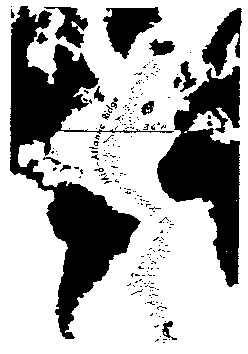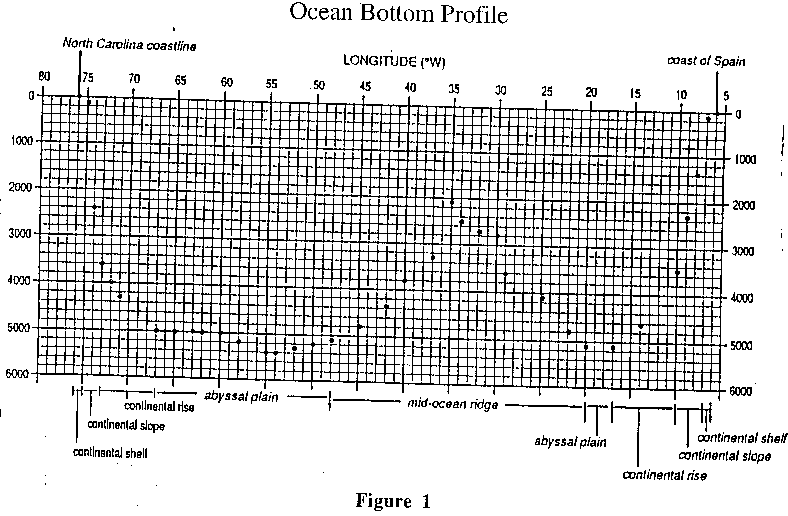 |
 |
|
|
|
|
Grade 5-8 Performance Task Task:In this activity, you will interpret a graph of ocean depths and topographic features. Materials:
Background:The data for the graph is figure 1 (see attached) was obtained by a ship that sailed between North Carolina and Spain along approximately 36 degrees N latitude. Thirty-six stops were made to collect data. Figure 1 shows the seafloor depth at each location and identifies the seafloor region. The map below shows the 36 degrees N latitude line across the Atlantic Ocean. This is the approximate path traveled by the ship from North Carolina to Spain.
To make the profile easier to plot, the vertical scale is not the same as the horizontal scale. The amount by which the vertical scale is greater than the horizontal scale is called the vertical exaggeration (VE). The value for VE is found by dividing the horizontal scale by the vertical scale. Note, both scaled must be in the same units. VE = horizontal scale To answer the questions, remove the Ocean Bottom Profile (fig. 1) from your task packet and draw a line to represent the ocean bottom according to the plotted data.
Answer Sheet
|
| a. Which seafloor region is widest? | _________________________ |
| b. Which is narrowest? | _________________________ |
| a. What is the ocean depth at 15 degrees W? | ________________________ |
| b. What is the depth of the edge of the continental shelf? | ________________________ |
|
Seafloor Region
|
Longitude Range (degrees W)
|
Depth Change (m)
|
|
Continental Slope
|
74-73
|
|
|
Continental Rise
|
72-71
|
|
|
Abyssal Plain
|
63-62
|
a. Which seafloor region is steepest? ____________________ b. Which seafloor region is most level? ____________________
Vertical Exaggeration:
a. What crustal movement is most likely occurring beneath the mid-ocean ridge? (You may use a diagram with arrows to aid in your answer.)
b. The mid-ocean ridges are primarily composed of what kind of bedrock?
c. Using complete sentences, explain why hot water vents are often found in the rift valleys at the mid-ocean ridges?
Figure 1:

